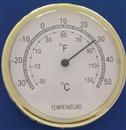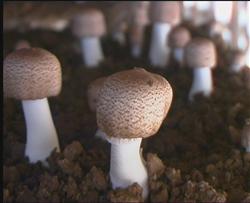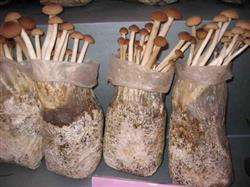What should we pay attention to when planting Agaricus blazei Murrill?

What should we pay attention to when planting Agaricus blazei Murrill? Ask netizens to help introduce that if the method of planting Agaricus blazei Murrill is not in place, it will affect the firmness and abnormal mushroom emergence of Agaricus blazei Murrill. 1. The main factors affecting the fruiting of Agaricus blazei Murrill: 1. The temperature is the most important factor affecting the fruiting of Agaricus blazei Murrill: the mycelial culture temperature of Agaricus blazei Murrill is wide (10-37 ℃), so there are generally no problems in production. The key is the fruiting stage, which requires a temperature of 20: 33 ℃, the optimum temperature of 22-25 ℃, and about 2 weeks from primordium differentiation to mushroom bud formation. For every tide of normal mushroom production, there must be an ambient temperature of 20-33 ℃ for about 20 days, during which too low or too high temperature can lead to abnormal fruiting. Due to temperature reasons, four situations are often encountered in the production process: first, there are no stable climatic conditions in the whole mushroom season, and the temperature rises and falls. Second, when the temperature is favorable for mushroom production, the mycelium does not reach physiological maturity, or when the tide changes, the culture time is not enough, and the mushroom emergence time is missed. Third, when the temperature is favorable for mushroom production, no management measures are taken. Fourth, the cultivation facilities are not perfect, no measures are taken to adjust the temperature, or the facilities adopted are easy to cause substantial changes in temperature. 2. Formula and treatment of Agaricus blazei Murrill culture materials: unscientific or improper treatment of Agaricus blazei Murrill culture materials will lead to non-bacteria or abnormal mushroom emergence. The most common conditions in production are: ① culture materials are single, fresh, wood-based materials, or there are obvious defects in the culture formula. The culture materials cultivated with ② clinker were not treated by composting, or acidified materials (such as dung grass, etc.) were added. The fermentation of ③ culture material did not proceed as required, or the fermentation failed. 3. Cultivation technical measures: cultivation management, especially some key technical links, did not take corresponding measures, resulting in mushroom obstacles or pathological changes, mainly including: ① fruiting body formation stage did not properly manage moisture and ventilation, making it difficult to form fruiting body. The plots cultivated in ② field did not carry out pest control before use, and the pest control measures were not effective in the culture stage. ③ was eroded by Rain Water and the material layer was immersed in water for a long time. 2. The methods to ensure the normal mushroom production of Agaricus blazei Murrill: 1. Reasonable arrangement of production season: reasonable arrangement of production season is the key to the success of Agaricus blazei Murrill cultivation. Taking advantage of the wide temperature range of Agaricus blazei Murrill, the production should be arranged appropriately in advance. Generally, according to the meteorological data of various places, the mycelium of Agaricus blazei should be inoculated or sown 3 months in advance when the average temperature is 20: 25 ℃, so that the physiologically mature mycelium should wait for the suitable time for mushroom emergence, but not the opposite. The cultivation of raw materials is generally not arranged to produce mushrooms in autumn. In clinker cultivation, "interseason cultivation" should be considered, that is, mushroom should be inoculated in spring and autumn, or in autumn and spring in the following year. 2. Do a good job of stacking and fermentation of culture materials: no matter what cultivation method is adopted, the culture materials should be fermented, in which the cultivation of raw materials should be treated completely in accordance with the fermentation process, and the culture materials with incomplete fermentation or fermentation failure should not be used. Clinker cultivation can be carried out "semi-fermentation", fermentation time is not less than 5 days (new material not less than 8 days), turn the pile not less than once (new material not less than 2 times). The fermented culture material should not have a sour smell. 3. Take corresponding technical management measures according to the passage of season and climate change. The links that should be paid attention to in the management are as follows: spraying heavy water and strengthening ventilation when ① primordium appears. When ② overwinters and summers, the moisture content of the material layer should be properly controlled. ③ attaches great importance to the prevention and control of diseases and insect pests in the bacterial stage. Click to get more planting techniques of Agaricus blazei Murrill
- Prev

How to manage Agaricus blazei Murrill after picking?
How to manage Agaricus blazei Murrill after picking? Please introduce that it is more suitable to harvest Agaricus blazei Murrill when the fruiting body is 5cm to 15cm high and has not yet opened the umbrella. Agaricus blazei Murrill can harvest 3-5 stubble mushrooms in one cultivation cycle. Clean up the mushroom feet and fragments on the mushroom bed, fill the pit with new soil and stop spraying water.
- Next

Cultivation of Pleurotus ostreatus: what causes the low yield of Pleurotus ostreatus?
What causes the low yield of Pleurotus ostreatus? Is there any way to increase the yield of tea mushroom? Also ask experienced netizens to help introduce the main factors affecting the high and stable yield of Pleurotus ostreatus. References are as follows: 1. Strain degradation: the breeding work of Pleurotus ostreatus lags behind, the source of the strain is single, and out.
Related
- Fuxing push coffee new agricultural production and marketing class: lack of small-scale processing plants
- Jujube rice field leisure farm deep ploughing Yilan for five years to create a space for organic food and play
- Nongyu Farm-A trial of organic papaya for brave women with advanced technology
- Four points for attention in the prevention and control of diseases and insect pests of edible fungi
- How to add nutrient solution to Edible Fungi
- Is there any good way to control edible fungus mites?
- Open Inoculation Technology of Edible Fungi
- Is there any clever way to use fertilizer for edible fungus in winter?
- What agents are used to kill the pathogens of edible fungi in the mushroom shed?
- Rapid drying of Edible Fungi

